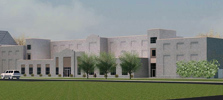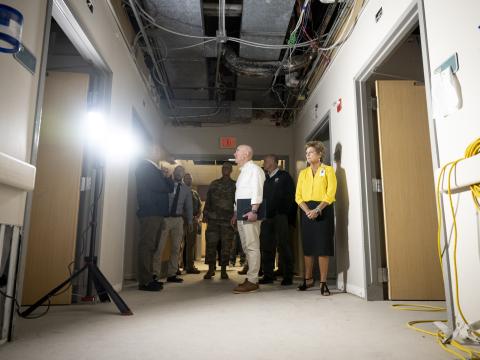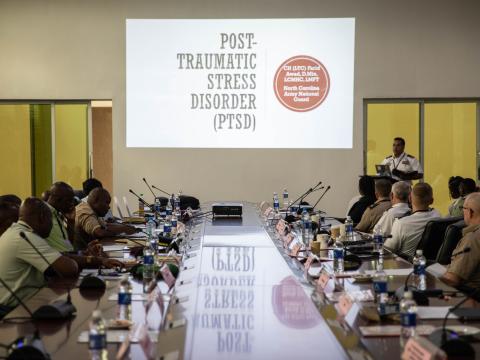Collaboration and Autonomy Converge
Although it cherishes the work of its sailors, the U.S. Navy is boosting its priority on autonomous systems that in many ways will save humans. The Naval Research Laboratory (NRL) is establishing the Autonomous Systems Research Laboratory (ASRL), which will dive deep into highly innovative, interdisciplinary research. The new facility, scheduled to open in October 2011, will be the nexus for scientists and engineers with differing backgrounds to apply their expertise to inventions that operate with little to no intervention from humans.
Alan Schultz, director, Naval Center for Applied Research in Artificial Intelligence, NRL, also is now the ASRL’s first director. He points out that this facility has been a long time in coming; the NRL has been developing unmanned systems since the 1920s. Now, the goal is to look toward the future and determine how resources should be directed to basic and applied research to advance from unmanned systems to autonomous systems that could be considered at “the peer level” with humans. “Warfighters will always be in the loop, there’s no doubt about that. But ‘unmanned’ doesn’t really reduce the number of staff members needed to operate systems,” Schultz says. To accomplish this goal, autonomous systems must be able to understand both the rules of engagement and commander’s intent, he explains. 
The Autonomous Systems Research Laboratory’s nearly 50,000-square-foot facility will be a work center for NRL scientists with varying backgrounds as they rotate through the center working on different projects.
The facility Schultz oversees, which is being built at an estimated cost of nearly $18 million, will be the site where science and technology components are integrated into research prototype systems. It will be the “nerve center” for basic research for both the Navy and the U.S. Marine Corps, says Capt. Paul Steward, USN, commanding officer, NRL.
The NRL currently is the home to several independent efforts that, in one way or another, relate to taking the human out of the loop: platforms, sensors, energy systems and autonomous behavior itself. One goal of putting a collaborative effort literally under one roof is to find new ways of integrating these individual endeavors so the whole is greater than the sum of its parts, explains NRL Director of Research Dr. John Montgomery.
To this end, ownership of the ASRL facility is not assigned to one of the NRL’s divisions or disciplines. Instead, NRL researchers will bring a project to the ASRL so they can use its distinctive capabilities and work as a team while retaining their positions within their divisions.
The facility itself reflects this multifaceted style. It will include a power and energy laboratory, a sensor laboratory and four human-systems interaction laboratories. The first will feature a walk-in dry room, so researchers can work with moisture-sensitive or hydroscopic materials. In the second, scientists will be able to examine different types of chemical, biological, radiological and nuclear explosive sensors as well as intelligence, surveillance and reconnaissance sensors. The ASRL will be used to integrate these sensors into systems and platforms.
The four human-systems interaction laboratories will enable researchers to work and communicate with robots and robotic platforms. Schultz emphasizes that the ability to test and evaluate the man-machine interface is extremely important to progress in the autonomous realm. This relationship requires trust, so checking to make sure autonomous systems behave as expected when sent on long missions is a critical capability, he says.
Systems will be analyzed to ensure warfighters can monitor an autonomous platform and ensure it is functioning, he shares. Using modeling and simulation as well as other tools, scientists at the facility will test the robustness of autonomous software by throwing a variety of problems at it and watching how it reacts. “We can look at how far we can push it and have it still behave the way it was designed to behave,” he relates.
In addition, the scientists in the facility will be able to observe computer-warfighter interaction in situations where the human operator must focus on the output of numerous autonomous unmanned systems simultaneously. Schultz explains that one goal will be to determine if an autonomous system can detect when operators are not paying attention to the output from the most critical system in a given situation.
Several ASRL projects already have been funded. For example, the Office of Naval Research (ONR) is working on shipboard firefighting robots. Schultz points out that this type of work requires expertise in a number of areas, from how to locate hot spots to how to teach robots to follow commands. In this type of environment, what may be required is an anthropomorphic robot that can get into and out of tight spaces. “This all requires collaboration between scientists who are experts in chemicals, sensors and fires,” he states. The ONR also has funded the exploration of advanced techniques for testing and evaluating autonomic logic for unmanned underwater vehicles.


